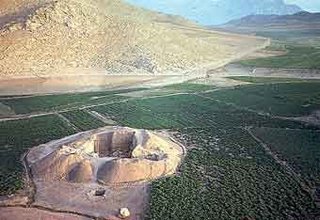
LONDON, (CAIS) -- World’s earliest traces of human settlement have been found in Ganj-Darreh, one of the country’s most ancient hills near the present-day Harsin in Kermanshah province.
Director of Kermanshah Cultural Heritage, Handicrafts and Tourism Department for museums and historic sites, Ali Moradi Bisotouni, explained that visible traces of early settlement in Ganj-Darreh bear evidence of Iran’s age-old civilization.
Moradi Bisotouni recalled, “The hill was excavated several times by a non-Iranian archeologist Philip E. L. Smith in 1967, 1969, 1971 and 1974. His studies indicated that there are six stratigraphic layers in the region dating back to the Mousterian Era (Middle Paleolithic).“
He explained, “Adobes have been found in the area which were used to build houses, reinforced with mud and straw.“
The discoveries signify that the houses did not have doors and that people entered them through roofs. “The houses were built in two stories. People lived in the top floor and used the bottom floor as their food storage.“
He named the objects discovered in Ganj-Darrah as mud objects, potteries, stone tools, pestle and stone blades.
Director of Kermanshah Cultural Heritage, Handicrafts and Tourism Department for museums and historic sites, Ali Moradi Bisotouni, explained that visible traces of early settlement in Ganj-Darreh bear evidence of Iran’s age-old civilization.
Moradi Bisotouni recalled, “The hill was excavated several times by a non-Iranian archeologist Philip E. L. Smith in 1967, 1969, 1971 and 1974. His studies indicated that there are six stratigraphic layers in the region dating back to the Mousterian Era (Middle Paleolithic).“
He explained, “Adobes have been found in the area which were used to build houses, reinforced with mud and straw.“
The discoveries signify that the houses did not have doors and that people entered them through roofs. “The houses were built in two stories. People lived in the top floor and used the bottom floor as their food storage.“
He named the objects discovered in Ganj-Darrah as mud objects, potteries, stone tools, pestle and stone blades.
